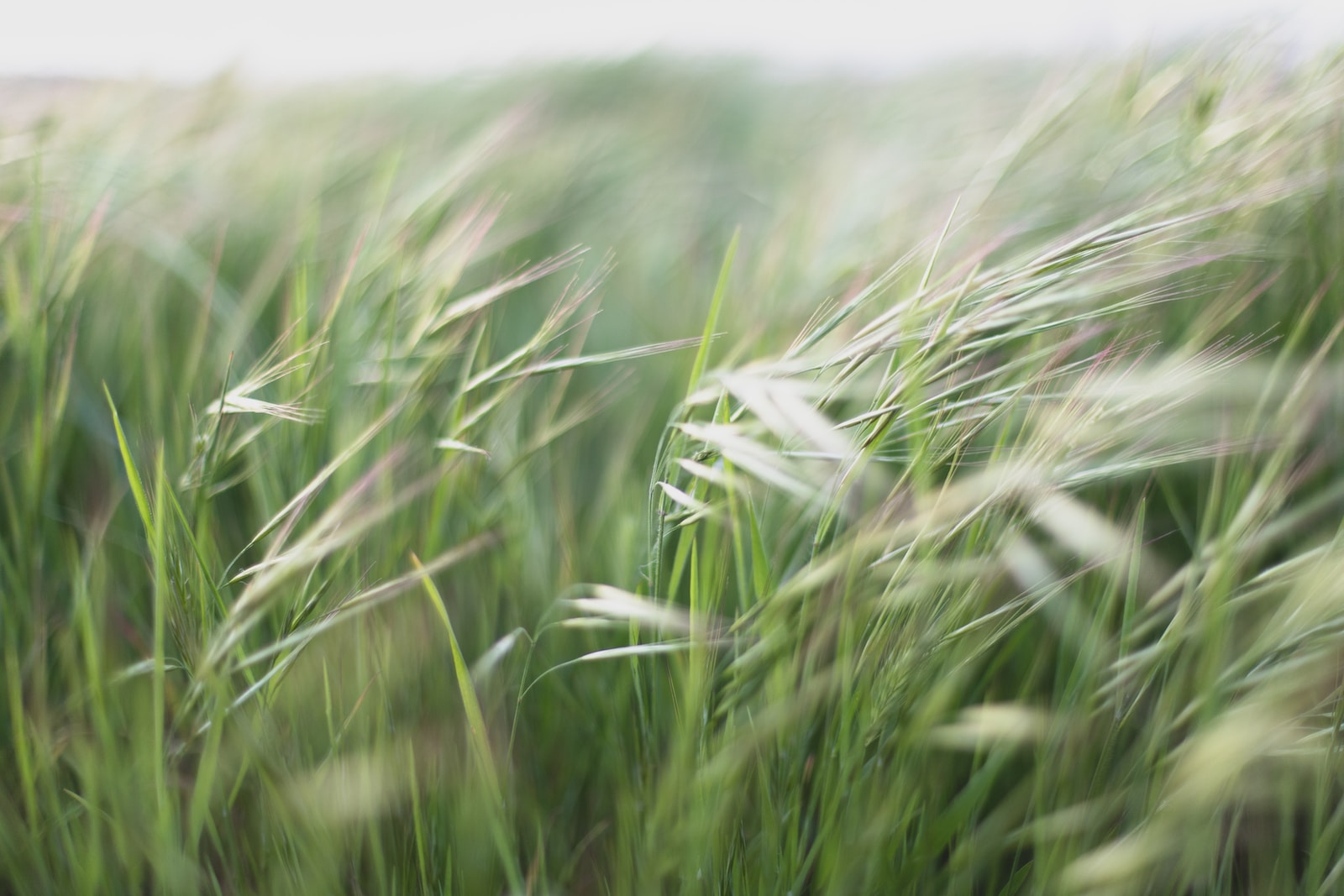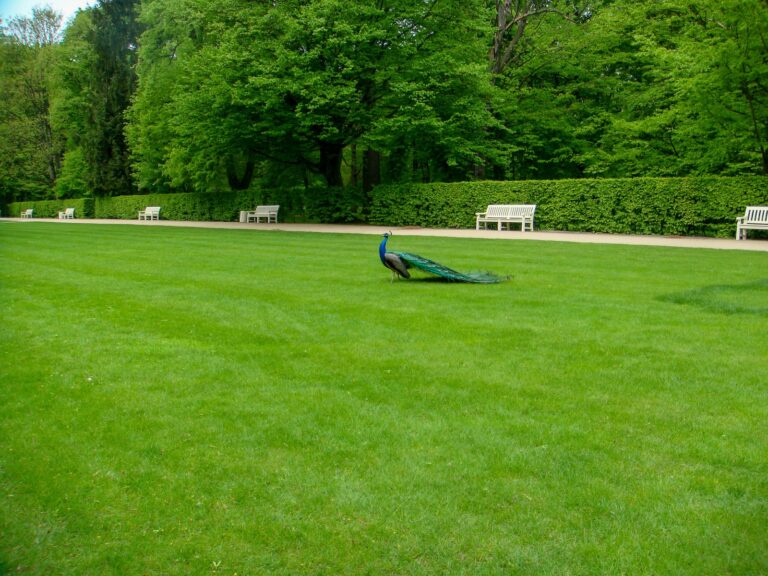Common Types of Weeds in Lawns and How to Identify Them

A well-manicured lawn is a symbol of pride for homeowners, but just like any garden, it can fall prey to those pesky invaders called weeds. These unwanted guests not only ruin the aesthetic appeal of your lawn but also compete with your beloved grass for nutrients and water.
But fear not! In this blog post, we will delve into the common types of weeds that often plague lawns and equip you with the knowledge to identify them. By understanding their characteristics and growth habits, you’ll be better prepared to tackle these intruders head-on and regain control over your pristine turf.
So grab your gardening gloves and let’s embark on a journey to banish those stubborn weeds from your lawn once and for all.
How to identify and control weeds in your lawn
Weeds can be a pesky problem in any lawn, but with the right knowledge and techniques, you can keep them at bay. Identifying and controlling weeds is essential to maintain a healthy and beautiful lawn.
One of the most common types of weed found in lawns is dandelions. These yellow flowers may look pretty, but their deep taproots make them difficult to remove completely. To control dandelions, you can manually pull them out or use a herbicide specifically designed for broadleaf weeds.
Another troublesome weed is crabgrass. This annual grassy weed spreads rapidly and competes with your turfgrass for nutrients and water. To prevent crabgrass from taking over your lawn, it’s important to apply a pre-emergent herbicide before it germinates.
Nutsedge is another type of weed that commonly invades lawns. It has triangular stems and resembles grass, but its quick growth rate can quickly overtake your turfgrass if left untreated. Applying an herbicide labeled for nutsedge control can help eliminate this persistent weed.
White clover is often considered a beneficial plant by some due to its nitrogen-fixing properties, but many homeowners still want it removed from their lawns as it stands out against the uniformity of the turfgrass. Hand-pulling or spot-treating with an appropriate herbicide are effective ways to manage white clover infestations.
Plantain is yet another common lawn weed that forms rosettes of broad leaves close to the ground surface. Regular mowing will weaken plantain plants over time since they rely on leaf surface area for photosynthesis.
Chickweed tends to thrive in cool-season lawns during spring and fall when other grasses are less active. Maintaining proper mowing height throughout the year helps keep chickweed populations under control.
By recognizing these common types of weeds in your lawn and taking appropriate measures like manual removal or targeted herbicides when necessary, you can effectively keep your lawn weed-free and healthy.
Dandelions
Dandelions are one of the most common and recognizable weeds found in lawns. These pesky plants have bright yellow flowers that transform into those fluffy white seed heads we all love to blow on as kids. But don’t let their innocent appearance fool you – dandelions can quickly take over your lawn if left unchecked.
Identifying dandelions is relatively easy. They have long, jagged leaves that form a rosette shape at the base of the plant. The bright yellow flowers emerge on tall stalks, which eventually turn into those familiar white puffballs filled with seeds.
When it comes to controlling dandelions, prevention is key. Regularly mowing your lawn at the proper height can help prevent these weeds from establishing themselves. Hand-pulling or digging them out with a dandelion digger tool can also be effective for small infestations.
If you prefer a chemical approach, there are herbicides available specifically designed to target dandelions without harming your grass. Be sure to follow the instructions carefully and use caution when applying any chemicals to your lawn.
Remember, staying vigilant and taking action early is crucial in keeping dandelions from spreading throughout your yard. Keep an eye out for their telltale yellow blooms and nip them in the bud before they become a real nuisance!
Crabgrass
Crabgrass is a common and pesky weed that can quickly take over your lawn if left unchecked. It’s important to be able to identify this invasive plant so you can take action before it spreads.
One way to identify crabgrass is by its distinctive appearance. The leaves are light green in color and have a coarse texture. They grow in a spreading, clump-like pattern, which can make your lawn look untidy and unkempt.
Another telltale sign of crabgrass is its rapid growth rate. This weed thrives in warm weather and will often outcompete the surrounding grass for sunlight, water, and nutrients. If you notice patches of grass that seem to be growing faster than the rest of your lawn or areas where the grass appears thicker and more upright, it could be an indication of a crabgrass infestation.
Controlling crabgrass requires both removal and prevention strategies. One effective method is hand-pulling the weeds as soon as they appear. Make sure to remove them from the root to prevent regrowth.
Preventing future outbreaks involves maintaining proper lawn care practices such as regular mowing at the appropriate height (usually around 2-3 inches) and ensuring adequate watering without overwatering.
By staying vigilant and taking proactive measures against crabgrass, you can keep your lawn looking lush and healthy all year round.
Nutsedge
Nutsedge is a common and persistent weed that can be quite frustrating for homeowners. This pesky plant has the ability to quickly take over your lawn if left unchecked. It is often mistaken for grass due to its similar appearance, but there are some key characteristics that can help you identify nutsedge.
One of the most noticeable features of nutsedge is its triangular-shaped stem. Unlike grass stems which are round, nutsedge stems have edges that form a triangle when viewed from above. Additionally, the leaves of this weed are long and narrow with a shiny texture.
Nutsedge also has an extensive root system which allows it to thrive in wet or poorly drained areas. If you notice patches of nutsedge growing in low-lying areas of your lawn where water tends to collect, it’s likely this invasive weed.
Controlling nutsedge can be challenging as it spreads through underground tubers called nutlets. These nutlets can remain dormant in the soil for years before sprouting new plants. Hand-pulling nutsedge may provide temporary relief, but getting rid of all the nutlets is nearly impossible without professional intervention.
To effectively control nutsedge, herbicides specifically designed for this type of weed are often necessary. Applying these herbicides at the right time and following label instructions is crucial for successful eradication.
Remember, identifying and controlling weeds like nutsedge requires patience and persistence. By staying vigilant and taking action as soon as you spot any signs of infestation, you’ll be well on your way to maintaining a healthy and beautiful lawn.
White Clover
White Clover is a common weed that can often be found in lawns. It has small, round leaves and clusters of white flowers. This pesky weed tends to spread quickly and can take over large areas if left unchecked.
Identifying White Clover is relatively easy due to its distinct appearance. The leaves are trifoliate, meaning they have three leaflets per leaf stalk. The flowers are small and white, forming dense clusters at the top of long stems.
Controlling White Clover can be challenging because it spreads through underground stems called stolons. These stolons allow the weed to creep across your lawn and establish new plants wherever they touch the ground. Regular mowing can help keep White Clover from flowering and producing seeds.
To effectively control White Clover, you may need to use herbicides specifically formulated for broadleaf weeds like this one. Be sure to follow the instructions carefully when applying herbicides as improper usage could harm desirable grasses.
Keeping your lawn healthy by providing proper nutrition, regular watering, and maintaining good soil health will also help prevent White Clover from taking hold in the first place.
Identifying and controlling White Clover requires consistent effort but with proper management practices, you can keep this weed from overtaking your beautiful lawn.
Plantain
Plantain is a common weed found in lawns and gardens all over the world. It is known for its distinctive broad leaves that are often mistaken for banana plants. However, plantain is not related to bananas at all.
Identifying plantain can be quite easy once you know what to look for. The leaves of this weed are long and oval-shaped, with prominent veins running through them. They typically grow in a rosette pattern and have smooth edges.
One of the reasons why plantain is considered a nuisance weed is because it has a deep taproot that allows it to survive even under harsh conditions. This makes it difficult to control or remove from your lawn or garden.
To effectively manage plantain, regular maintenance practices such as mowing high and watering deeply can help prevent its growth. Additionally, hand-pulling or spot-treating with herbicides can be effective methods of control.
Remember that prevention is always better than cure when it comes to weeds like plantain. Maintaining a healthy lawn through proper fertilization and irrigation practices will make it less susceptible to weed infestations.
So next time you spot those broad leaves popping up in your yard, don’t mistake them for bananas! Take action against the pesky plantain and keep your lawn looking pristine.
Chickweed
Chickweed, with its delicate white flowers and small green leaves, is a persistent weed that can quickly take over your lawn if left unchecked. This low-growing annual plant thrives in cool and moist conditions, making it a common sight in lawns during the spring and fall.
Identifying chickweed is relatively easy. It has oval-shaped leaves that grow opposite each other along slender stems. The stems are usually hairy and have tiny white flowers at their tips. Chickweed spreads rapidly through seeds, which can easily be carried by wind or animals.
Controlling chickweed requires a multi-pronged approach. One option is to manually remove the weeds by hand-pulling or using a weeding tool. Applying pre-emergent herbicides in early spring or fall can also help prevent chickweed from germinating.
To discourage future growth of chickweed, ensure proper lawn maintenance practices such as regular mowing at the recommended height for your grass type, adequate watering to avoid excessive moisture buildup, and proper fertilization to promote strong turf growth.
By staying vigilant and taking action against these pesky invaders, you can keep your lawn free from the clutches of chickweed.
Conclusion
In maintaining a healthy and vibrant lawn, it’s important to stay vigilant against the common types of weeds that can infiltrate your turf. By being able to identify these weeds and taking proactive measures to control them, you can ensure that your lawn remains weed-free all year round.
Remember, different types of weeds require different methods of control. Whether it’s manually removing dandelions or using herbicides for crabgrass, understanding the specific needs and characteristics of each weed is crucial in effectively managing them.
Regularly inspecting your lawn for any signs of weed growth, such as broad leaves or distinctive seed heads, will help you catch these intruders early on before they have a chance to spread. Additionally, maintaining proper lawn care practices like regular mowing, watering deeply but infrequently, and fertilizing appropriately will keep your grass healthy and resistant to weed invasion.
So the next time you spot an unwanted plant poking through your perfectly manicured lawn, don’t panic! Armed with knowledge about common types of weeds and how to identify them accurately, you’ll be equipped to take swift action in eradicating those pesky invaders.
By staying diligent in your efforts and following some basic guidelines for weed control in lawns, you’ll be well on your way to enjoying a lush green carpet underfoot – free from unsightly intrusions!







